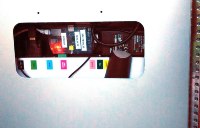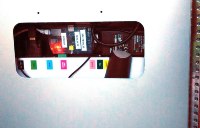CPU model : ARMv6-compatible processor rev 7 (v6l)for one thing, I'm wondering how much network traffic a Pi can really push.
Number of cores : 1
CPU frequency : MHz
Total amount of ram : 485 MB
Total amount of swap : 0 MB
System uptime : 45 days, 6:39,
Download speed from CacheFly: 3.87MB/s
Download speed from Coloat, Atlanta GA: 862KB/s
Download speed from Softlayer, Dallas, TX: 1.87MB/s
Download speed from Linode, Tokyo, JP: 1.12MB/s
Download speed from i3d.net, Rotterdam, NL: 1.23MB/s
Download speed from Leaseweb, Haarlem, NL: 1.92MB/s
Download speed from Softlayer, Singapore: 1.17MB/s
Download speed from Softlayer, Seattle, WA: 1.27MB/s
Download speed from Softlayer, San Jose, CA: 1.33MB/s
Download speed from Softlayer, Washington, DC: 1.46MB/s
I/O speed : 20.0 MB/s
Here's a quick overview of my RPi.




